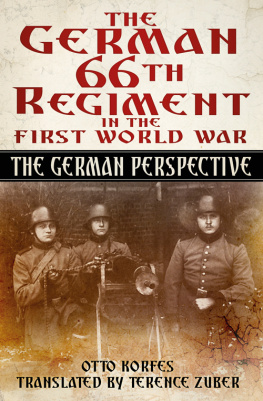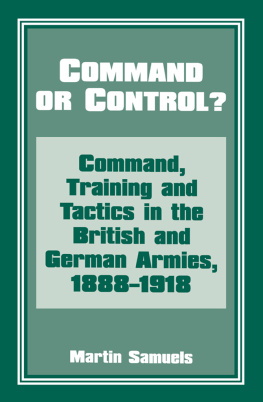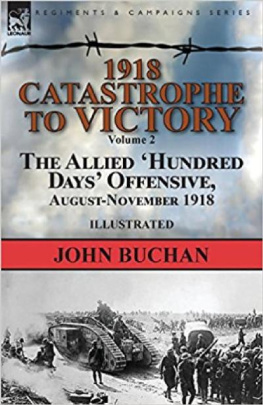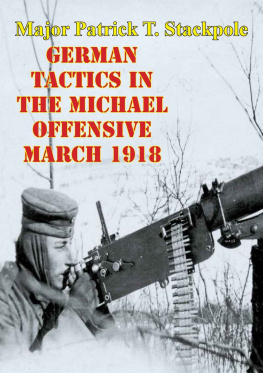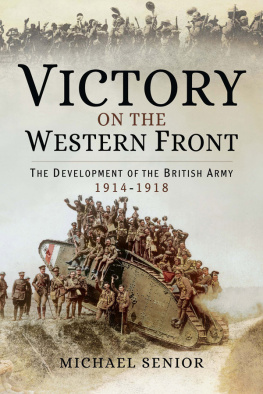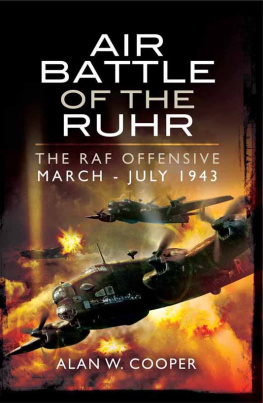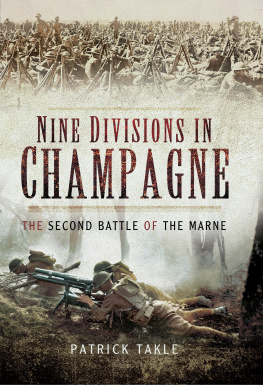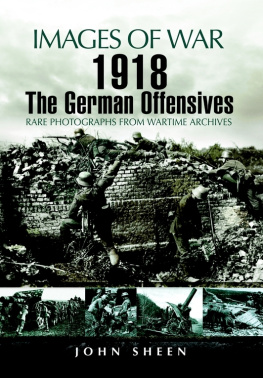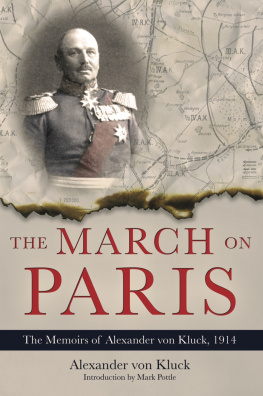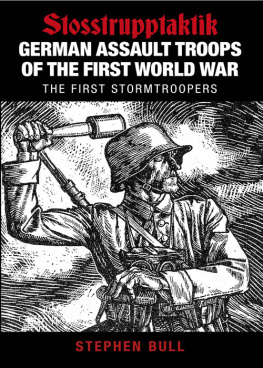
This edition is published by PICKLE PARTNERS PUBLISHINGwww.picklepartnerspublishing.com
To join our mailing list for new titles or for issues with our books picklepublishing@gmail.com
Or on Facebook
Text originally published in 1993 under the same title.
Pickle Partners Publishing 2014, all rights reserved. No part of this publication may be reproduced, stored in a retrieval system or transmitted by any means, electrical, mechanical or otherwise without the written permission of the copyright holder.
Publishers Note
Although in most cases we have retained the Authors original spelling and grammar to authentically reproduce the work of the Author and the original intent of such material, some additional notes and clarifications have been added for the modern readers benefit.
We have also made every effort to include all maps and illustrations of the original edition the limitations of formatting do not allow of including larger maps, we will upload as many of these maps as possible.
GERMAN TACTICS IN THE MICHAEL OFFENSIVE - MARCH 1918
by
PATRICK T. STACKPOLE, MAJ, USA
B.S., United States Military Academy, West Point, NY, 1981
TABLE OF CONTENTS
Contents
TABLE OF CONTENTS
ABSTRACT
This study investigates the German spring offensive of 1918 to determine how the Germans achieved tactical success, yet failed to reach their strategic objective. The study covers the development of new German infantry tactics during limited offensive operations and conduct of the elastic defense on the western front It investigates the development of artillery tactics on the eastern front, and the incorporation of these artillery and infantry tactics into larger scale offensives at Caporetto. The study describes the preparation of both the infantry and artillery units for the Michael offensive. The relationship between the infantry and artillery tactics combined with the British defense is the key to determine the causes for success and failure.
The German tactical system used in Operation Michael was a brilliant adaptation to the lethality of the World War I battlefield. The German techniques were superb tools for conducting a breakthrough of a defensive zone. However, the lack of German mobility following the breakthrough foiled the German strategic goal to envelop the British Army.
German techniques and lessons learned in this offensive have direct application to U.S. Army infiltration doctrine.
ACKNOWLEDGEMENTS
I would like to thank MAJ Frank Galgano for his help throughout the project.
CHAPTER 1 INTRODUCTION
In the early morning hours of 21 March 1918, the British trenches erupted with a preparation fire of unprecedented violence and efficiency. German guns bombarded British artillery batteries with a combination of high explosive and chemical rounds that made it practically impossible to man their guns. Throughout the depth of the British defense, the Germans pounded the trenches with heavy artillery fire. Despite a lack of registration, which would have telegraphed an assault, the fire was highly accurate. Columns of Stormtroopers armed with flame weapons and grenades assaulted immediately behind the rolling barrage. The Stormtroopers by-passed resistance and penetrated deeply to the rear of the British lines. By nightfall, the German lead elements had advanced nearly 10 miles on terrain near the Somme battlefield where the Germans stymied a British advance but two years before. {1}
How did the German infantry manage such success when the British had met such failure two years prior? How did they execute such a comprehensive fire support plan that stunned the defenders with its ferocity and accuracy without registration? What methods did the Germans use to support the attack and maintain momentum?
The new German tactical doctrine, or infiltration tactics, answers these questions. These tactics emphasized the squad as the maneuver unit. {2} Squads were to by-pass resistance and to continue to attack deep to the rear of the enemy positions. {3} The Germans organized the fire support plans to capitalize on surprise and shock effect. Extremely violent but short preparation fires culminated in a rolling barrage to protect the infantry advance. {4} Regular infantry formations followed the infiltration units to reduce bypassed strongpoints and to keep the spearheads supplied. The result of these innovations was a radical doctrinal change in tactics which came very close to breaking through the western front defense after years of stalemate. {5}
This doctrinal change did not occur quickly, nor did it have one inventor. Rather it was the combination of small unit tactics learned during the trench warfare on the western front, with techniques learned during the more open warfare of the eastern and Italian fronts. The new tactics convinced the German High Command (OHL) that a tactical change could provide the breakthrough they sought.
The genesis of the infiltration tactics can be shown through an examination of the attacks with limited objectives in the west, artillery tactics from the eastern and Italian fronts, and Ludendorffs influence. Combat on the western from led to changes in infantry organizations and training of the individual stormtrooper. The battles of Riga and Caporetto on the Eastern and Italian fronts demonstrated the effectiveness of these tactics on a larger scale. Ludendorffs contribution was to see the possibility of a strategic decision in the west, through an application of the new tactics.
German experience on the western front demonstrated the inability of linear formations of riflemen to overcome machine-guns and artillery simply through mass. At first, German units modified their skirmish line formations into squad columns simply to survive. The efficiency of the squad as a fighting unit was evident, and the Germans designated the squad as the basic fighting unit. {6} The Germans experimented with different infantry organizations to increase the firepower and mobility of the unit. Captain Rohr equipped his stormtroop units with heavy weapons and trained them in new tactics. Rohrs assault units were effective during the limited objective assaults in the west. OHL ordered stormtroop units formed in all armies on the western front.
The dominance of machine-guns and artillery on the Verdun and Somme battlefields quickly showed the Germans that tactics based upon mass formations of infantry were tantamount to murder. As the Allies deployed ever greater numbers of artillery batteries, the Germans found that even holding deep defensive positions was inordinately expensive. {7}
Consequently, the Germans developed a defensive system which relied on depth, rather than stubbornly holding a forward trench. This system reduced casualties to artillery during bombardment, but demanded immediate counterattacks to regain lost ground. {8} The Germans formed counterattack units modeled after Rohrs assault units. The counterattack units worked well and were the cornerstone of the elastic defense. {9} A major contribution was that the non-commissioned officers (NCO) received valuable leadership and tactical experience as they led the counterattack squads. The small unit techniques used during the elastic defense augmented the stormtrooper training. The combination was the basis for infiltration tactics and the organization of stormtrooper units in 1918.




